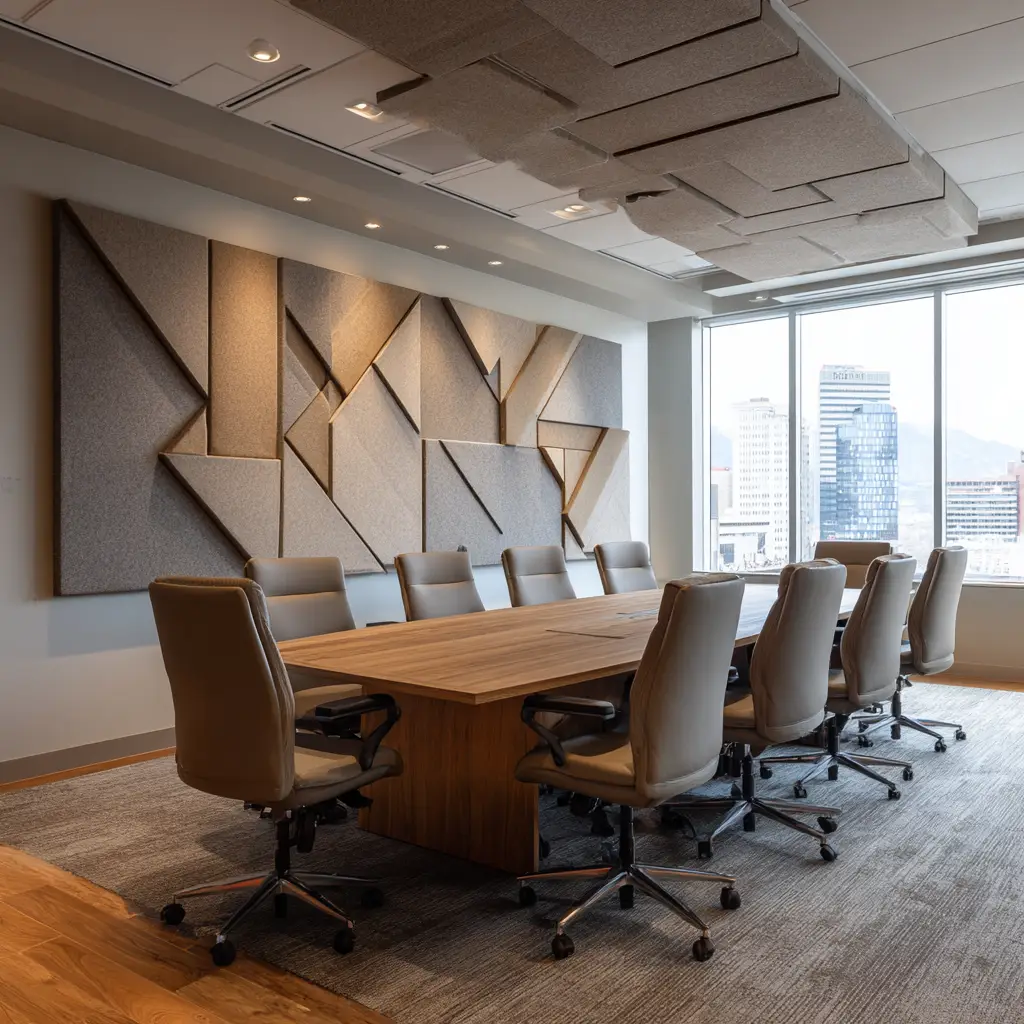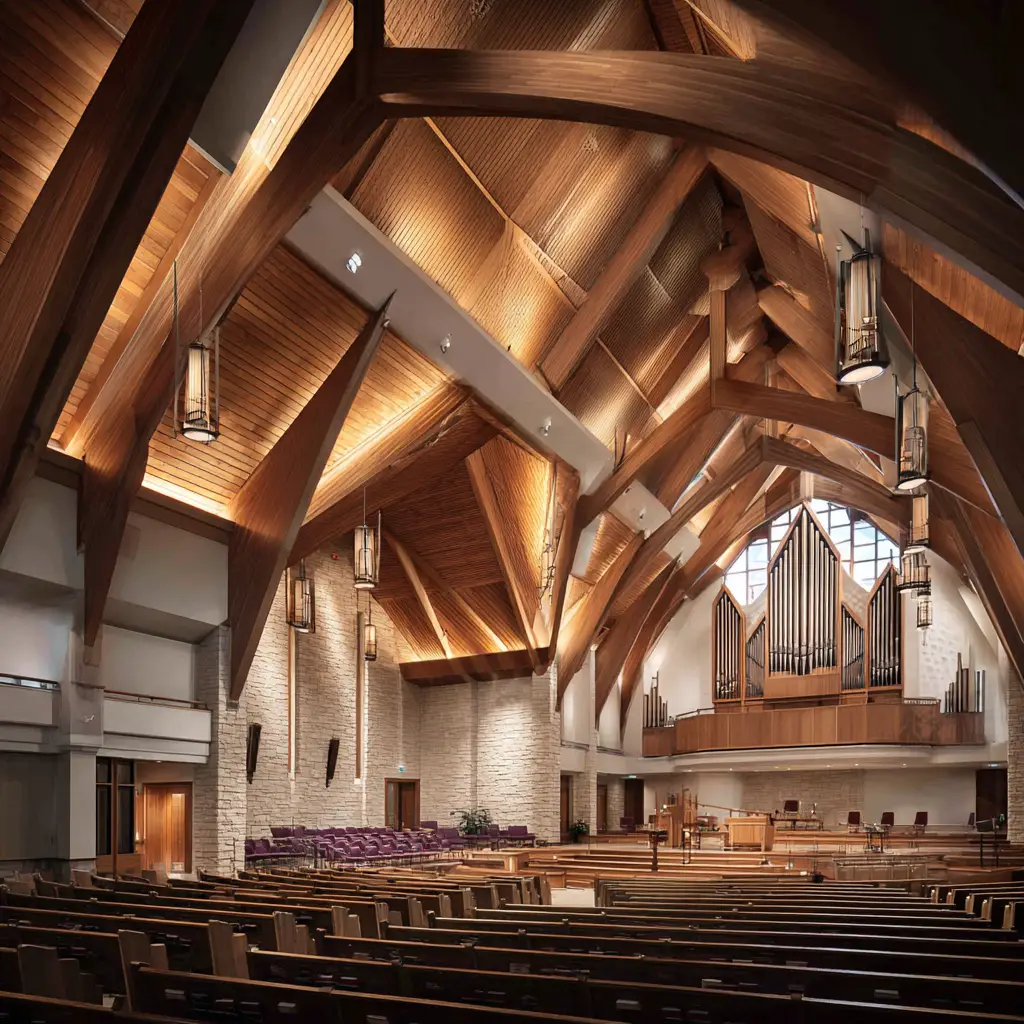
You've probably seen acoustic panels before without realizing it—stylish wall squares in tech-forward offices, minimalist panels floating above church sanctuaries, or subtle fabric-wrapped designs in modern conference rooms. While they often look decorative, their real purpose is functional: they control how sound waves move through a space.
If you're dealing with echoey meetings, muffled worship services, or noisy classrooms, acoustic panels might be the missing link between frustration and clarity. This article explains what acoustic panels actually do, how they work, and how to tell if they're the right solution for your space.
Why acoustic issues happen in modern spaces
Before we dive into what acoustic panels do, it's helpful to understand the problem they solve. Many modern rooms are designed with materials like glass, drywall, metal, and concrete—all of which reflect sound rather than absorb it. That means every spoken word, instrument, or audio cue bounces around, creating excessive reverberation and reducing clarity.
This creates problems like:
- Echo and feedback in audio and video conferencing
- Difficulty hearing in classrooms, training rooms, or open-plan offices
- Distracting noise levels in multipurpose or high-ceiling spaces
What do acoustic panels actually do?
Acoustic panels are designed to absorb sound energy, especially in the mid- and high-frequency ranges most associated with human speech. They don't eliminate all noise, and they don't block sound like a wall would—but they prevent sound from bouncing around a room, dramatically improving clarity and overall sound quality.
Here's how they work:
Sound absorption
When sound waves hit an acoustic panel, the soft, porous materials inside (like foam or fiberglass) trap and dissipate the sound energy rather than allowing it to reflect back into the room. This reduces noise and controls sound reflections throughout the space.
Reducing reverberation
By absorbing excess sound, panels shorten the reverb time in a room—making speech and music more intelligible and easier on the ears. This leads to more comfortable and productive environments, which is essential for improving acoustics in offices, classrooms, meeting rooms, and performance venues.
Targeting problem frequencies
Depending on placement and material, panels can target specific frequencies, which is especially important in rooms with audio equipment or musical instruments. According to the Acoustical Society of America, proper acoustic design considers both the physical properties of materials and how sound behaves in different environments. This is common in recording studios, broadcast facilities, and corporate presentation rooms where precise sound control is crucial.

Common types of acoustic panels
Acoustic treatments come in different styles, but all serve a similar purpose: to improve the sound environment. Professional acoustic treatment options include:
- Wall panels — Mounted on walls at ear level to absorb reflected sound
- Ceiling clouds — Suspended overhead to absorb sound in large, open spaces
- Bass traps — Placed in corners to absorb low-frequency sound energy
- Baffles — Hung vertically in rows, often used in gymnasiums or multipurpose rooms
Some designs use acoustic foam or wood slat panels to combine sound control with aesthetic appeal. These are often included in high-traffic zones where acoustic treatment needs to blend into the space.
What kind of spaces benefit most from acoustic panels?
If your space is large, hard-surfaced, or used for frequent conversation, acoustic panels will likely help. Here are environments where they're especially effective:
- Conference rooms: Clearer dialogue during hybrid meetings and video calls
- Churches and sanctuaries: More immersive worship experiences
- Classrooms: Better speech intelligibility for students and teachers
- Offices: Reduced noise distractions and improved focus
- Studios and theaters: Controlled sound for professional-level production
- Recording studios: Cleaner sound capture with targeted panel placement
These commercial spaces often have acoustic design challenges that properly placed panels can address effectively.
Signs your room may need acoustic panels
You might not be thinking about acoustics every day—but your ears notice. Here are telltale signs that a room could benefit from treatment:
- Conversations sound "echoey" or boomy
- People strain to hear or talk over each other
- Audio recordings or livestreams sound hollow or unclear
- Noise levels feel distracting, especially during focused tasks
Research published in the Journal of Environmental Psychology demonstrates that improved acoustic conditions significantly reduce workplace disturbances and cognitive stress, making acoustic treatment more than just a comfort issue—it's a productivity concern.
In these scenarios, acoustic panels can make a significant difference by reducing reverberation and improving overall sound quality.

Improving spaces without changing their look
One reason many facility managers hesitate to install acoustic panels is concern about appearance. But today's panels are designed with aesthetics in mind:
- Panels come in a wide variety of colors, shapes, and textures
- Some mimic the look of canvas art or wall decor
- Custom branding or photography can be printed directly on them
That means you can enhance office or classroom acoustics without disrupting the visual harmony of your space. Incorporating suspended panels or subtly integrated wall solutions creates a high-functioning sound environment without sacrificing style.
Transform your room's experience with sound
Sound isn't just about function—it's part of how people experience your space. Whether you're running team meetings, delivering a sermon, or teaching a class, clarity matters. Acoustic panels are a practical, cost-effective way to elevate that experience without major renovations.
Want to know if your space would benefit from acoustic treatment? RYGID AV can help assess the room, recommend the right type of panels, and integrate them into your existing layout seamlessly. Contact us today for a free consultation.
RYGID AV | 122 Backstretch Ln., Mooresville, NC 28117(980) 263-9194 | info@rygidav.com
Where to Contact + Connect with RYGID AV
Mooresville, NC 28117

.webp)